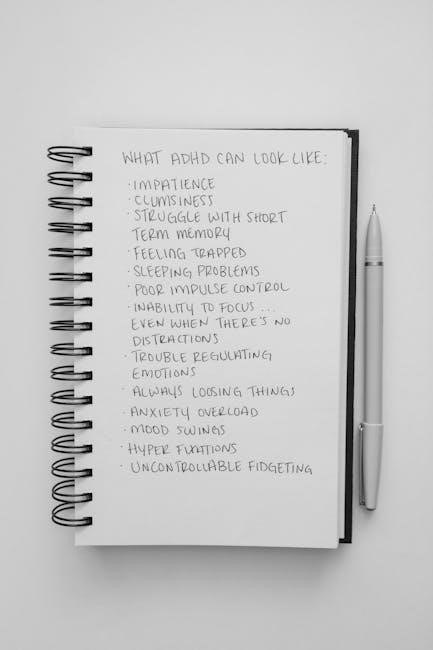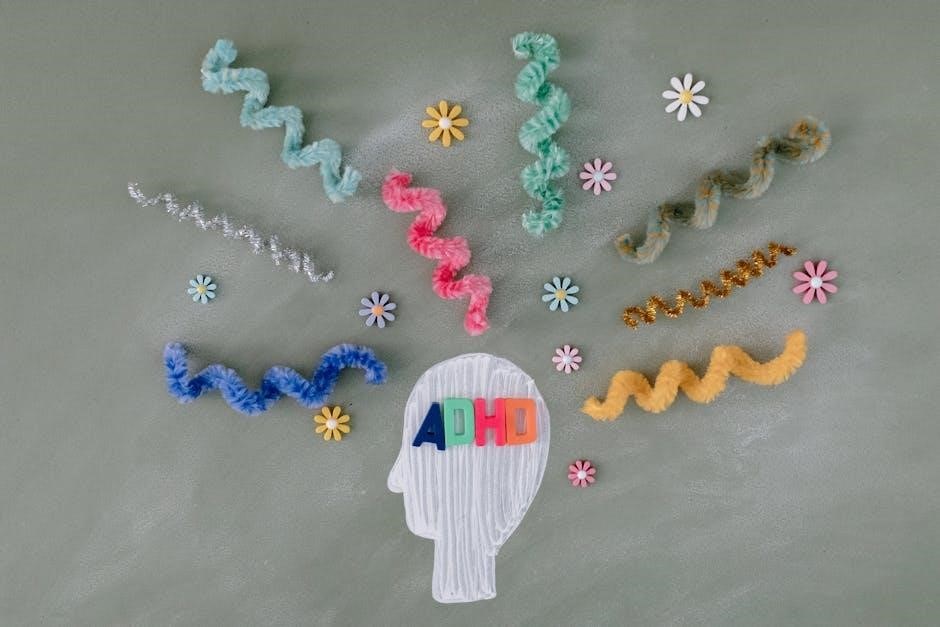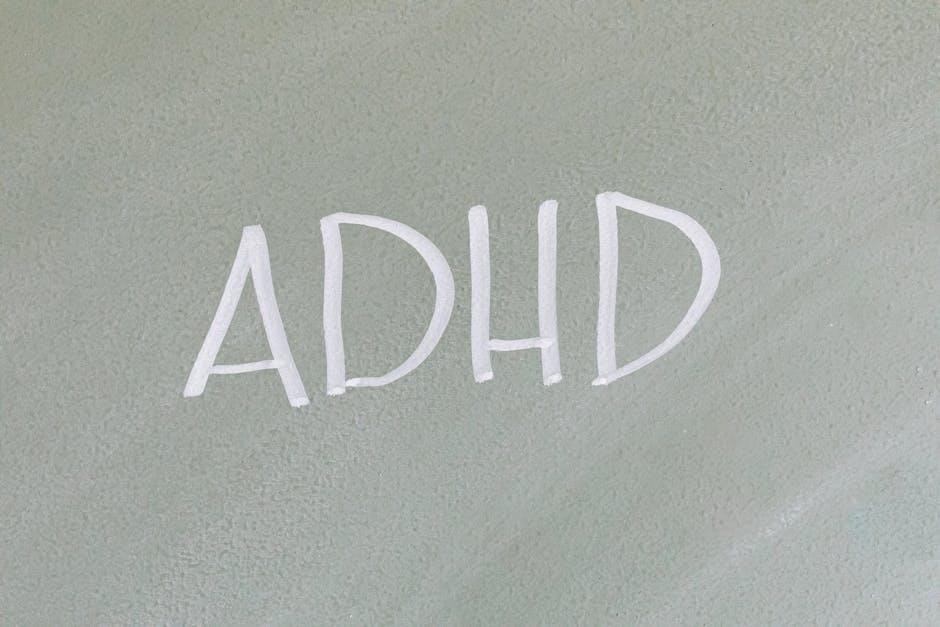Dialectical Behavior Therapy (DBT) is a powerful therapeutic approach developed by Marsha Linehan, focusing on emotional regulation and mindfulness. The DBT workbook offers practical exercises and worksheets to help individuals master core skills like distress tolerance and interpersonal effectiveness, providing a structured path toward emotional resilience and a fulfilling life.
What is DBT?
Dialectical Behavior Therapy (DBT) is a type of psychotherapy developed by Marsha Linehan. It focuses on teaching individuals skills to manage emotions, tolerate distress, and improve relationships. DBT emphasizes four core modules: mindfulness, distress tolerance, emotion regulation, and interpersonal effectiveness. These skills help individuals reduce emotional intensity and develop a sense of balance in overwhelming situations. The therapy is particularly effective for those with borderline personality disorder but is also beneficial for others struggling with emotional dysregulation or anxiety. DBT workbooks, such as those by Marsha Linehan or Matthew McKay, provide practical exercises and worksheets to guide skill development and application in daily life.
The Purpose of DBT
The primary purpose of Dialectical Behavior Therapy (DBT) is to help individuals develop coping strategies to manage intense emotions, reduce self-destructive behaviors, and improve interpersonal relationships. By focusing on skill development, DBT aims to enhance resilience and create a life experienced as meaningful and fulfilling. The therapy integrates cognitive-behavioral techniques with mindfulness practices to address emotional dysregulation. DBT workbooks, such as those by Matthew McKay and Marsha Linehan, offer practical tools and exercises to achieve these goals. The structured approach of DBT enables individuals to navigate life challenges more effectively, fostering long-term emotional well-being and personal growth. The ultimate goal is to empower individuals to lead balanced lives, free from overwhelming emotional turmoil.
Structure of the DBT Workbook
The DBT workbook is structured into modules focusing on specific skills: mindfulness, distress tolerance, emotion regulation, and interpersonal effectiveness. It begins with an introduction to DBT, outlining its core concepts. Each module provides practical exercises, real-life applications, and step-by-step instructions to help users master these skills. Worksheets and handouts are included for self-directed learning and therapy sessions. Additional resources and tools support ongoing practice and skill reinforcement. This structured approach offers a comprehensive and accessible learning experience, helping individuals manage emotional challenges and improve their quality of life.

Core Concepts of DBT
DBT focuses on mindfulness, emotional regulation, distress tolerance, and interpersonal effectiveness. These concepts help individuals manage emotions and behaviors, promoting balance and resilience in daily life.

Mindfulness and Its Role in DBT
Mindfulness is a core concept in DBT, focusing on being fully present and nonjudgmental in the moment. It teaches individuals to observe their thoughts, emotions, and sensations without reacting impulsively. This skill helps reduce emotional reactivity and enhances self-awareness. By practicing mindfulness, individuals can better manage distressing situations and improve their ability to tolerate difficult emotions. The workbook provides exercises to cultivate mindfulness, such as breathing techniques and grounding exercises, which are essential for emotional regulation. Regular mindfulness practice strengthens the ability to stay calm and focused, even in challenging circumstances, making it a foundational skill for overall well-being.
Distress Tolerance Strategies
Distress tolerance strategies in DBT are techniques to manage overwhelming emotions without worsening the situation. These strategies help individuals tolerate pain and distress in the short term, providing time to develop more effective coping mechanisms. The workbook offers practical tools such as distraction techniques, self-soothing methods, and radical acceptance. Distraction techniques, like engaging in activities or using the “Wise Mind” concept, help divert focus from distressing emotions. Self-soothing involves calming the senses through activities like listening to music or taking a warm bath. Radical acceptance focuses on acknowledging reality without judgment to reduce suffering. These strategies empower individuals to handle crises more effectively and prevent emotional escalation, fostering resilience and emotional stability.

Emotion Regulation Techniques
Emotion regulation techniques in DBT focus on managing intense emotions to reduce their intensity and duration. These strategies help individuals identify, understand, and modify emotional responses to create a more balanced emotional state. Key techniques include identifying and labeling emotions, using “opposite action” to act against harmful urges, and practicing “check the facts” to assess the validity of emotional reactions. Additionally, techniques like “building mastery” and “cope ahead” empower individuals to handle emotional challenges proactively. These methods aim to enhance emotional resilience, reduce mood swings, and improve overall emotional well-being. By learning to regulate emotions effectively, individuals can respond to situations more thoughtfully rather than react impulsively, fostering healthier relationships and life outcomes.
Interpersonal Effectiveness Skills
Interpersonal effectiveness skills in DBT are designed to enhance communication and relationship-building abilities. These skills empower individuals to express their needs clearly, set boundaries, and maintain self-respect while navigating interactions. Key techniques include the DEAR MAN and GIVE acronyms. DEAR MAN stands for Describe, Express, Assert, Reinforce, Mindful, Apologize, and Negotiate, guiding effective communication. GIVE encourages being Gentle, acting with Interest, Validating others, and using an Easy manner to foster connection. These strategies help individuals achieve their goals in relationships while maintaining respect and understanding. By mastering these skills, individuals can build stronger, more fulfilling relationships and communicate more effectively in all areas of life.

Key Features of the DBT Workbook

A comprehensive guide with step-by-step exercises, practical techniques, and user-friendly worksheets to help readers master DBT skills and apply them effectively in daily life.
Step-by-Step Exercises for Skill Development
The DBT workbook offers structured, step-by-step exercises designed to help individuals progressively develop essential DBT skills. These exercises are tailored to enhance mindfulness, emotion regulation, distress tolerance, and interpersonal effectiveness. Each activity provides clear instructions, practical examples, and opportunities for reflection, enabling users to apply the techniques in real-life situations. The exercises are evidence-based and carefully sequenced to build mastery over time. Whether it’s practicing radical acceptance or improving emotional awareness, the workbook’s interactive approach ensures a deep understanding and practical application of DBT principles. This feature makes it an invaluable resource for both self-directed learning and therapist-guided sessions, fostering long-term skill development and emotional resilience.
Practical Applications of DBT Skills
The DBT workbook emphasizes the practical application of skills to manage emotions, reduce stress, and improve interpersonal relationships. Techniques like mindfulness and distress tolerance can be applied in daily life to handle challenging situations calmly. For instance, mindfulness practices help individuals stay grounded during emotional crises, while distress tolerance strategies, such as deep breathing or progressive muscle relaxation, provide immediate relief. Emotion regulation skills enable users to identify and manage emotions effectively, preventing escalation. Interpersonal effectiveness techniques, like assertiveness training, enhance communication and boundary-setting. These practical tools empower individuals to navigate real-world challenges with greater confidence and emotional resilience, fostering healthier interactions and personal growth.
Worksheets and Handouts for Skill Practice
The DBT workbook includes a variety of worksheets and handouts designed to help users practice and master DBT skills. These resources provide structured exercises for mindfulness, distress tolerance, emotion regulation, and interpersonal effectiveness. Worksheets guide users in identifying and challenging negative thought patterns, while handouts offer practical tips for applying skills in real-life situations. For example, exercises may include tracking emotions, practicing grounding techniques, or role-playing assertive communication. These tools are customizable, allowing individuals to tailor their practice to personal needs. The workbook’s interactive nature makes it an effective companion for both self-directed learning and therapist-guided sessions, ensuring consistent progress in skill development and emotional well-being.

Target Audience for the DBT Workbook
The DBT workbook is designed for individuals with borderline personality disorder, those struggling with emotional dysregulation, and mental health professionals seeking practical tools for skill development and therapy.
Individuals with Borderline Personality Disorder (BPD)
The DBT workbook is particularly beneficial for individuals diagnosed with Borderline Personality Disorder (BPD), as it provides structured tools to manage emotional dysregulation and reduce impulsive behaviors. It focuses on teaching skills like mindfulness, distress tolerance, and emotional regulation, which are essential for stabilizing intense emotions and improving relationships. The workbook often includes practical exercises and worksheets tailored to address common BPD challenges, such as fear of abandonment and chronic feelings of emptiness. By offering a clear, step-by-step approach, it empowers individuals to develop coping strategies and work toward long-term emotional balance. This resource is ideal for those seeking a self-directed or therapist-guided path to managing BPD symptoms effectively.

People Struggling with Anxiety and Other Mental Health Issues
Individuals dealing with anxiety or other mental health challenges can greatly benefit from a DBT workbook. The structured exercises and strategies, such as mindfulness and distress tolerance, help manage overwhelming emotions and reduce anxiety symptoms. Techniques like grounding and cognitive restructuring are particularly effective for addressing worry and panic. The workbook also offers tools to improve emotional regulation, which is crucial for those struggling with conditions like depression, PTSD, or generalized anxiety. By providing practical, actionable steps, the workbook empowers users to develop healthier coping mechanisms and improve their overall mental well-being. It’s a valuable resource for anyone seeking to understand and manage their emotions more effectively, regardless of their specific mental health diagnosis.
Therapists and Clinicians Using DBT in Their Practice
The DBT workbook is an invaluable tool for therapists and clinicians implementing DBT in their practice. It provides a structured framework for teaching DBT skills, ensuring consistency and clarity in sessions. The workbook’s exercises and worksheets can be used as supplementary materials, helping clients practice skills like mindfulness, distress tolerance, and emotion regulation. Clinicians can assign specific sections to align with treatment goals, enhancing the therapeutic process. Additionally, the workbook serves as a reliable resource for therapists to refresh their understanding of DBT principles and techniques. Its clear, actionable content makes it easier for professionals to guide clients toward meaningful behavioral changes and emotional growth, ultimately enriching their practice and improving client outcomes.

Using the DBT Workbook Effectively
Effectively using the DBT workbook involves setting clear goals, practicing skills consistently, and applying techniques in real-life situations. Regular review and tracking progress enhance outcomes, fostering personal growth and emotional resilience.
How to Implement DBT Skills in Daily Life
Implementing DBT skills in daily life begins with mindfulness, observing emotions without judgment. Practice grounding techniques like deep breathing or sensory exercises to stay present. Use emotion regulation strategies, such as identifying triggers and challenging negative thoughts. Incorporate distress tolerance techniques, like radical acceptance or distraction, to manage crises. Enhance interpersonal effectiveness by setting boundaries and communicating assertively. Integrate these skills into routines, such as using mindfulness during meals or practicing self-compassion during stressful moments. Consistency is key; even small moments of skill practice can build resilience. Over time, these strategies become second nature, improving emotional balance and relationships.
Using the Workbook with a Therapist
Using the DBT workbook with a therapist enhances the learning process, offering personalized guidance and feedback. Therapists can tailor exercises to individual needs, helping clients apply DBT skills effectively. Regular sessions allow for progress tracking and address challenges promptly. The workbook serves as a shared resource, fostering collaboration and accountability. Therapists can assign specific sections as homework, ensuring consistent practice. This structured approach helps integrate DBT techniques into daily life, promoting emotional regulation and resilience. The therapist’s expertise complements the workbook, providing deeper insights and support. This collaborative method accelerates skill mastery, leading to meaningful, lasting change.
Self-Directed Learning with the Workbook
Self-directed learning with the DBT workbook allows individuals to independently explore and practice DBT skills at their own pace. The workbook is designed to be user-friendly, with clear instructions and exercises that guide learners through each concept. For those without access to a therapist, self-directed learning provides a flexible and accessible way to develop emotional regulation, mindfulness, and distress tolerance. Users can set personal goals, track progress, and revisit challenging sections as needed. The workbook’s structured format ensures that learners can apply DBT principles effectively, even without professional guidance. Regular practice and consistency are key to maximizing the benefits of self-directed learning with the workbook.

Additional Resources and Tools
Explore free DBT worksheets, printable resources, and online PDF versions of the workbook for enhanced learning. Supplementary reading materials deepen understanding and skill application.
Free DBT Worksheets and Printable Resources
Access a variety of free DBT worksheets and printable resources online, designed to complement the Dialectical Behavior Therapy Workbook. These tools include exercises for mindfulness, distress tolerance, and emotion regulation. Many websites offer downloadable PDFs that can be printed for personal or therapeutic use. Worksheets often focus on specific skills, such as identifying emotions, challenging negative thoughts, or practicing radical acceptance. These resources are ideal for individuals seeking structured exercises to enhance their DBT practice. They can also be used in conjunction with the workbook to reinforce learning and track progress over time. Utilizing these printable materials can make DBT skills more accessible and practical for daily application.
Online PDF Versions of the Workbook
Online PDF versions of the Dialectical Behavior Therapy Workbook offer convenient access to the entire curriculum. These digital files can be downloaded and accessed on various devices, making it easy to carry the workbook anywhere. PDF formats ensure compatibility across different platforms, allowing users to study and practice DBT skills seamlessly. Many websites provide these versions, often for free or at a reduced cost compared to physical copies. This digital accessibility has made DBT resources more widely available, enabling individuals to engage with the material without waiting for shipments. The PDF versions are particularly useful for therapists and individuals who prefer digital notes or need to share materials easily. They also reduce the need for physical storage, making them a practical choice for modern learners.
Recommended Supplementary Reading
For those seeking to deepen their understanding of DBT, several recommended supplementary readings complement the workbook. Marsha Linehan’s Cognitive-Behavioral Treatment of Borderline Personality Disorder provides a comprehensive foundation of DBT principles. Additionally, The Dialectical Behavior Therapy Skills Workbook by Matthew McKay offers practical exercises for skill mastery. Books like Mindfulness for Borderline Personality Disorder by Blaise A. Worden further explore mindfulness practices. These resources enhance learning by offering diverse perspectives and techniques. They are ideal for individuals and therapists looking to expand their toolkit. Supplementary reading enriches the workbook experience, fostering a well-rounded approach to DBT. These materials are widely available in print and digital formats, including PDF versions for easy access.
The DBT workbook is a powerful tool for personal growth and emotional resilience, offering effective strategies for long-term mental well-being and self-awareness.
The Importance of Consistent Practice
Consistent practice is essential for mastering DBT skills and achieving lasting emotional stability. Regularly applying techniques like mindfulness, distress tolerance, and emotion regulation helps reinforce these strategies, making them second nature during challenging moments. Over time, consistent practice reduces emotional reactivity and enhances resilience, leading to improved relationships and overall well-being. Even small, daily efforts can yield significant progress, preventing skills from fading and ensuring long-term mental health benefits.
By committing to ongoing practice, individuals can deepen their understanding of DBT principles and adapt them to real-life situations, fostering personal growth and emotional balance.
The Long-Term Benefits of DBT Skills
Mastering DBT skills offers profound long-term benefits, including improved emotional resilience, enhanced self-awareness, and healthier relationships. Over time, individuals develop better coping mechanisms for managing stress and negative emotions, reducing the intensity and frequency of emotional crises. DBT fosters self-acceptance and self-compassion, enabling individuals to navigate life challenges with greater confidence and balance. These skills also promote long-term mental health stability, reducing the risk of relapse into maladaptive behaviors. By integrating DBT principles into daily life, individuals can achieve a more fulfilling and emotionally balanced life, empowering them to pursue personal goals and build meaningful connections with others.
Final Thoughts on the DBT Workbook
The DBT workbook is a transformative tool for individuals seeking to manage emotional dysregulation and improve their quality of life. By providing structured exercises and practical strategies, it empowers users to develop resilience, self-awareness, and effective coping skills. Whether used independently or alongside therapy, the workbook offers a clear path to personal growth and emotional stability. Consistent practice of DBT skills fosters long-term positive changes, helping individuals navigate life’s challenges with confidence and balance. This workbook is not just a resource but a guide toward a more fulfilling and meaningful life, encouraging users to embrace their potential and thrive.

No Responses